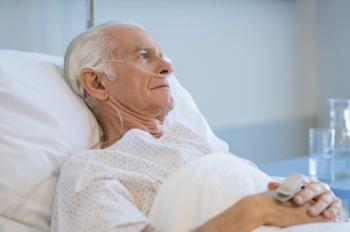
Navigating Multiple Myeloma Care: Balancing CAR T-Cell Therapy and Immunotherapy
The evolving treatment landscape for multiple myeloma includes debates on the timing and effectiveness of CAR T-cell therapy and quadruple immunotherapy regimens.
Multiple myeloma (MM) is the second most common hematological malignancy, affecting the healthy production of B lymphocytes that leads to brittle bones, renal dysfunction, anemia, or organ failure. MM is incurable and characterized by periods of remission followed by relapse, in which outcomes typically worsen with each successive line of therapy. Decades of research has led to the development of advanced, targeted therapies, such as chimeric antigen receptor (CAR) T-cell therapy and quadruple immunotherapy regimens that improve patient health outcomes. Experts at the Society of Hematologic Oncology 2024 Summit discussed the success of quadruple treatments, CAR T cell therapy, and stem cell transplantation (SCT), as well as how to effectively treat individuals with high-risk or relapsed disease.1
As aforementioned, the treatment landscape of MM has evolved in recent years and advanced therapies have greatly improved health outcomes, quality of life (QOL), and prolonging life for patients. Immunotherapies have become a cornerstone for the standard of care (SOC) treatment of MM, demonstrating significant improvements in progression-free survival (PFS) across various clinical trials. In the GRIFFIN trial (NCT02874742), researchers evaluated the safety and efficacy of the quadruple treatment daratumumab (Darzalex; Janssen Biotech Inc) plus lenalidomide (Revlimid; Bristol Myers Squibb), bortezomib (Velcade; Millennium/Takeda, Janssen Pharmaceutical Companies), and dexamethasone (D-RVd) compared with triple treatment lenalidomide, bortezomib, and dexamethasone (RVd).2
“With RVd at the 4-year mark, 70% of patients are progression free. With D-RVd, you're seeing that to be 87% so there's a differential of around 17%,” said Ajay K Nooka, MD, MPH, FACP, hematologist at the Emory University Winship Cancer Institute in Atlanta.
Additionally, minimal residual disease (MRD) negativity rates were higher in the group that received D-RVd compared with those who received RVd. Of the population, 2 of 3 patients achieved MRD activity within 18 months of D-VRd treatment whereas only 1 of 3 patients from the VRd arm achieved MRD activity. Similar results were observed in the PERSEUS trial (NCT03710603) evaluating transplant-eligible patients with newly diagnosed MM (NDMM). At 4 years, the PFS was 84% for the quadruplet regimen compared with 67% for the triplet regimen, maintaining a differential of around 17%. Given the results, Nooka concluded that quadruplet regimens result in deeper responses for patients with notable improvements in MRD negativity and PFS and emphasizes their use as a SOC in the frontline.3
CAR T-cell therapy is an emerging treatment that utilizes a patient’s engineered T-cells to target specific over-expressed proteins on the surface of MM cells. Its success has been indicated across numerous studies, as well as in real-world clinical practice. Unlike SCT, CAR T offers patients a less invasive treatment option without the need to spend prolonged periods receiving treatment in inpatient or outpatient settings. However, there is debate regarding when CAR T-cell therapy is most beneficial and for whom.
CAR T is typically used in later lines after a patient fails to respond to immunotherapy regimens or SCT. However, Krina K Patel, MD, MSc, associate professor at the MD Anderson Cancer Center in Houston, argued that CAR T-cell therapy has increased benefits in the first line rather than after prior failed lines of treatment. For some patients, waiting until later lines may increase their chances of being ineligible for CAR T due to disease progression, infections, or other complications. When offered earlier, patients may have a better chance of prolonged remission rather than cycling through multiple lines of therapy. In her argument, she explains that data from clinical trials and studies indicate that CAR T is superior to SOC treatments regarding efficacy and toxicity.
“We know that there's limited data, but there is data that shows that patients who get CAR T after a bispecific or BCMA do significantly worse in terms of response and PFS,” said Patel. “So, giving a CAR T before any of these other therapies makes more sense.”
Her stance on when to use CAR T is also influenced by the impact of prior therapies on the fitness of a patient’s T-cells. After multiple successive lines of therapy, prolonged antigen stimulation and exposure to lymphotoxic therapies can cause T-cell exhaustion, thereby diminishing the functional capacity of CAR T-cells and reducing response rates. Patel emphasized the significance of using CAR T in the frontline to overcome potential resistance to the treatment, indicating that the fitness and quantity of T-cells after prior lines of therapy can disadvantage patients receiving CAR T in later lines.
There is also a QOL benefit for patients with MM receiving CAR T, which is greatly impacted by the decreased time toxicity associated with SCT and other SOC treatments.
“I don’t think anything has a one-and-done feature for any of our other therapies where our patients truly feel better. They don’t have to come into the hospitals as often,” Patel stated. “And this is not just for months, it's for years.”
In contrast, Patel’s debate opponent, Saad Z Usmani, MD, MBA, FACP, myeloma specialist and cellular therapist at the Memorial Sloan Kettering Cancer Center in New York, believed CAR T-cell therapy should be restricted to later lines of treatment after the use of other SOC therapies. Due to a lack of sufficient data indicating a more significant advantage to CAR T in earlier lines compared with SOC treatments, Usmani stated that more consideration is warranted depending on the needs of individual patients, the likelihood of toxicities, and the availability of treatment.
“Why do I need to use [CAR T-cell therapy] in earlier lines of treatment? Let's not forget about some of the real issues in relapse patients with CAR T are cytopenias, which happen in vast majority of them. They lead to ongoing infections, even after patients have recovered from CAR T-cell therapy. And this is a real issue,” Usmani said. “So, you always have to weigh the pros and cons, the efficacy and the safety profile issues.”
A consistent obstacle with CAR T is its accessibility to patients. Many hospitals, academic medical institutions, and care centers often lack the capacity and resources needed for treatment; therefore, patients with a greater need for CAR T may not be able to access it if is used in earlier lines for every patient. According to Usmani, less than 1000 CAR T procedures are performed per year in the US.
Use of CAR T in earlier or later lines of relapse should be considered using an evidence-based approach and consideration for the disease state of individual patients. High-risk, heavily pretreated patients with rapidly progressing disease may benefit, as well as those with aggressive relapsed or refractory disease. The decision to use CAR T and when requires careful patient selection, knowledge of disease characteristics, and a nuanced, individualized approach to treatment for each patient.
Treatment of high-risk or early relapse patients requires careful attention to disease states and the impact of prior lines of therapy. Use of CD38-targeted quadruplet regimens in the first line for early relapsed and high-risk populations was recommended, as well as the use of SCT for patients with aggressive disease. However, the success of these therapies is dependent on effective patient screening and development of personalized, patient-centric treatment regimens. Depending on disease characteristics, personal preference, and treatment availability, some patients may be more suited for quadruple therapies, while others may benefit from CAR T-cell therapy.
The treatment landscape for multiple myeloma continues to evolve with advancements in immunotherapies, CAR T-cell therapies, and SCT. Both quadruplet regimens and CAR T have shown impressive improvements in PFS and MRD negativity; however, the optimal timing and use of these treatments remains a topic of ongoing debate. As research progresses, the focus remains on refining treatment strategies that offer improved health outcomes, enhanced survival, and quality of life for patients battling MM.
REFERENCES
1. Martin T, Dispenzieri A, Nooka A, et al. Multiple Myeloma. Society of Hematologic Oncology 2024 Summit. September 5, 2024. Houston, TX.
2. Study comparing daratumumab, lenalidomide, bortezomib, and dexamethasone (d-rvd) versus lenalidomide, bortezomib, and dexamethasone (rvd) in subjects with newly diagnosed multiple myeloma. ClinicalTrials.gov Identifier: NCT02874742. Updated July 27, 2023. Accessed September 6, 2024. https://clinicaltrials.gov/study/NCT02874742
3. Daratumumab, velcade (bortezomib), lenalidomide and dexamethasone compared to velcade, lenalidomide and dexamethasone in subjects with previously untreated multiple myeloma (perseus). ClinicalTrials.gov Identifier: NCT03710603. Updated September 27, 2022. Accessed September 6, 2024. https://www.clinicaltrials.gov/study/NCT03710603
Newsletter
Stay informed on drug updates, treatment guidelines, and pharmacy practice trends—subscribe to Pharmacy Times for weekly clinical insights.


















































































































































































































